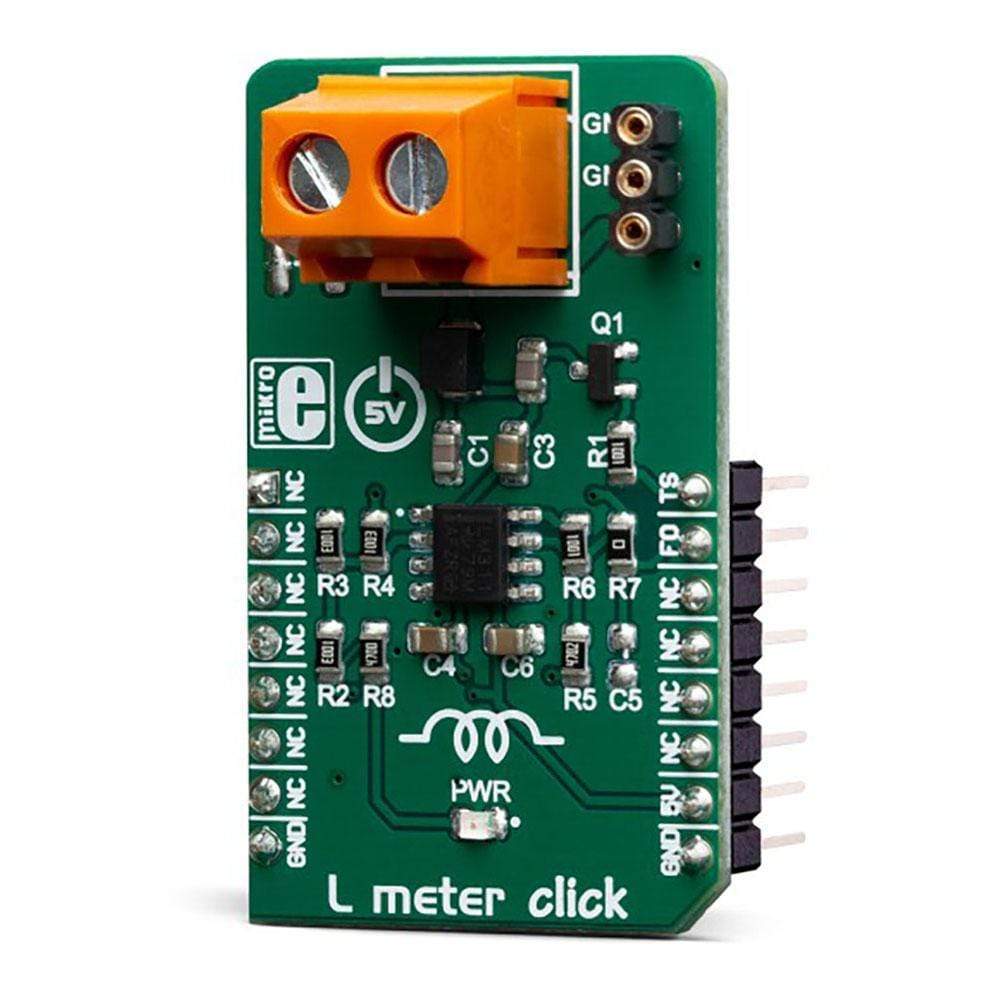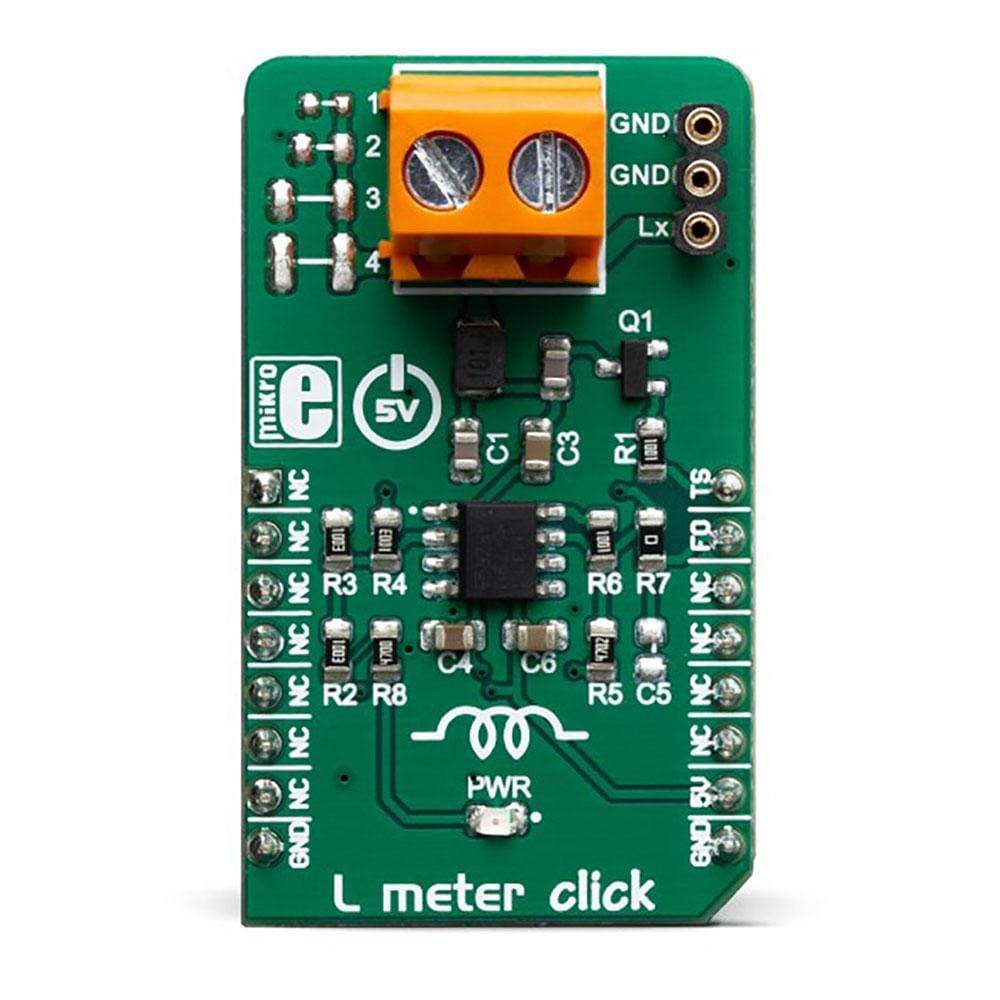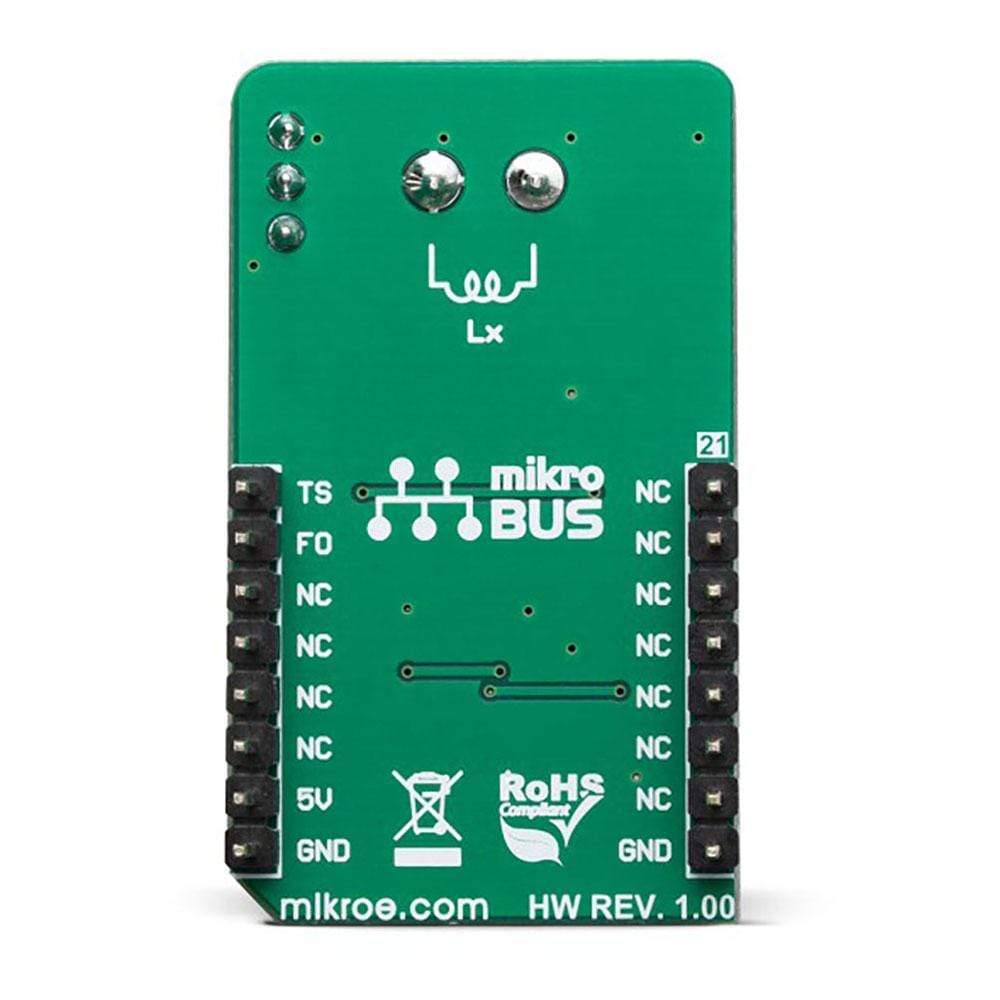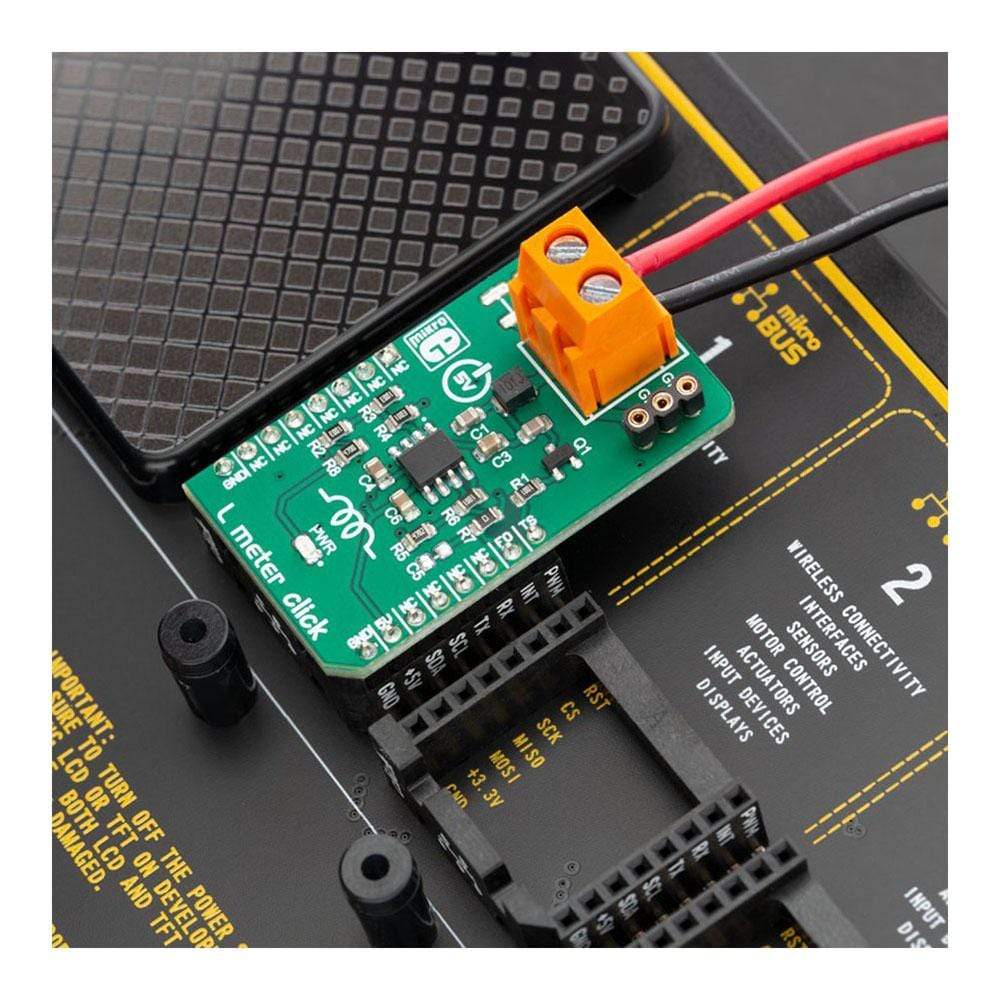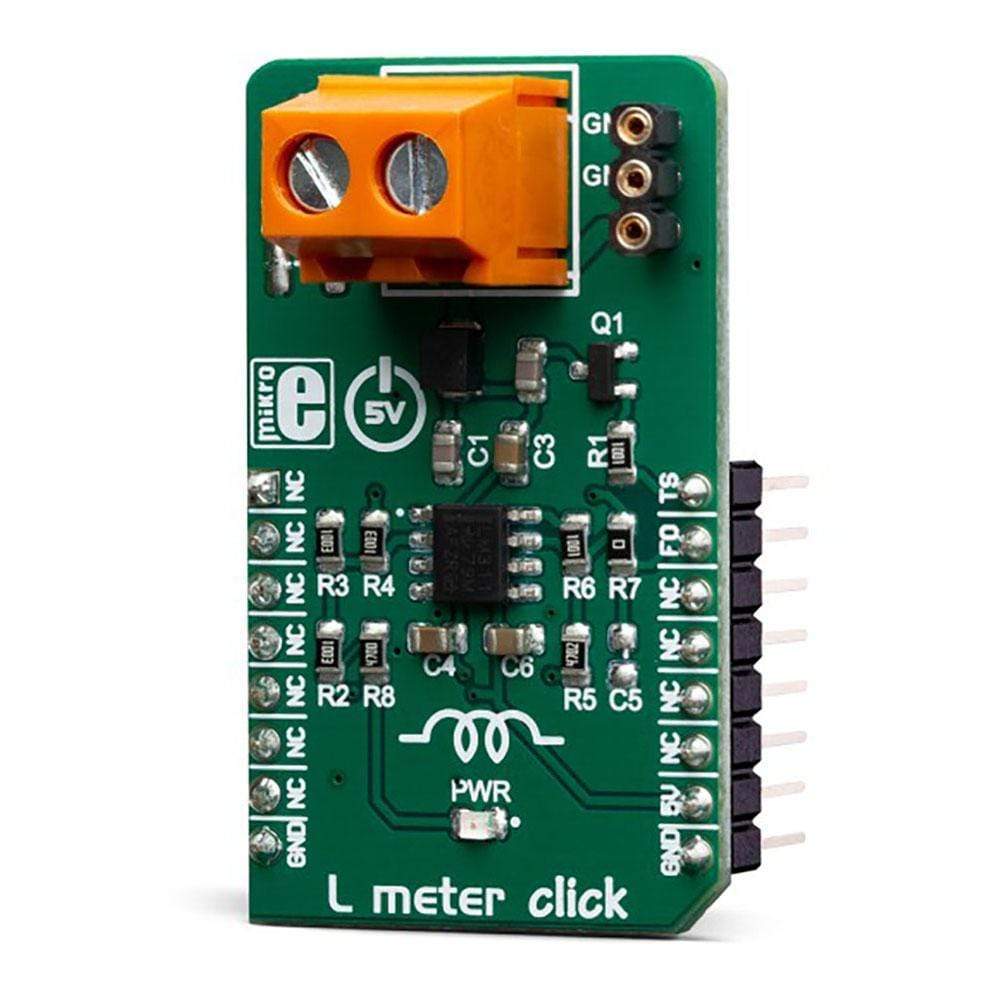
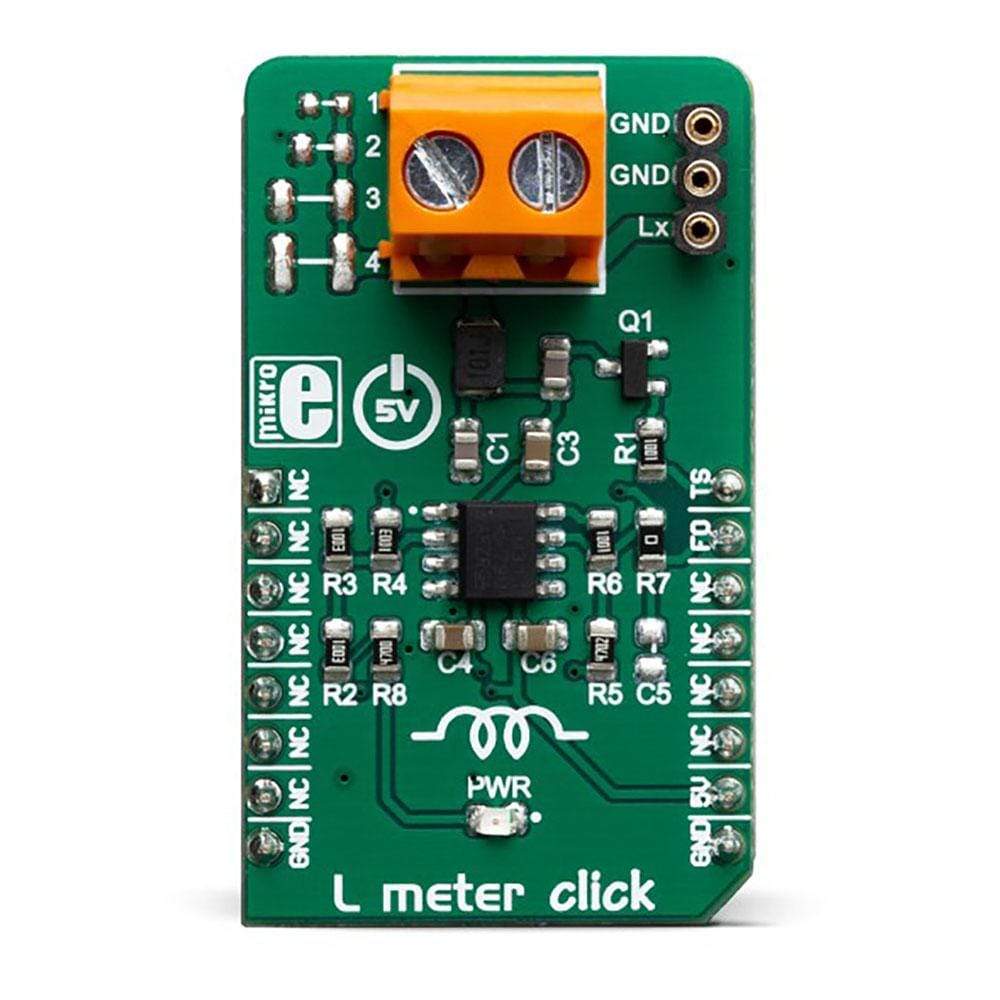
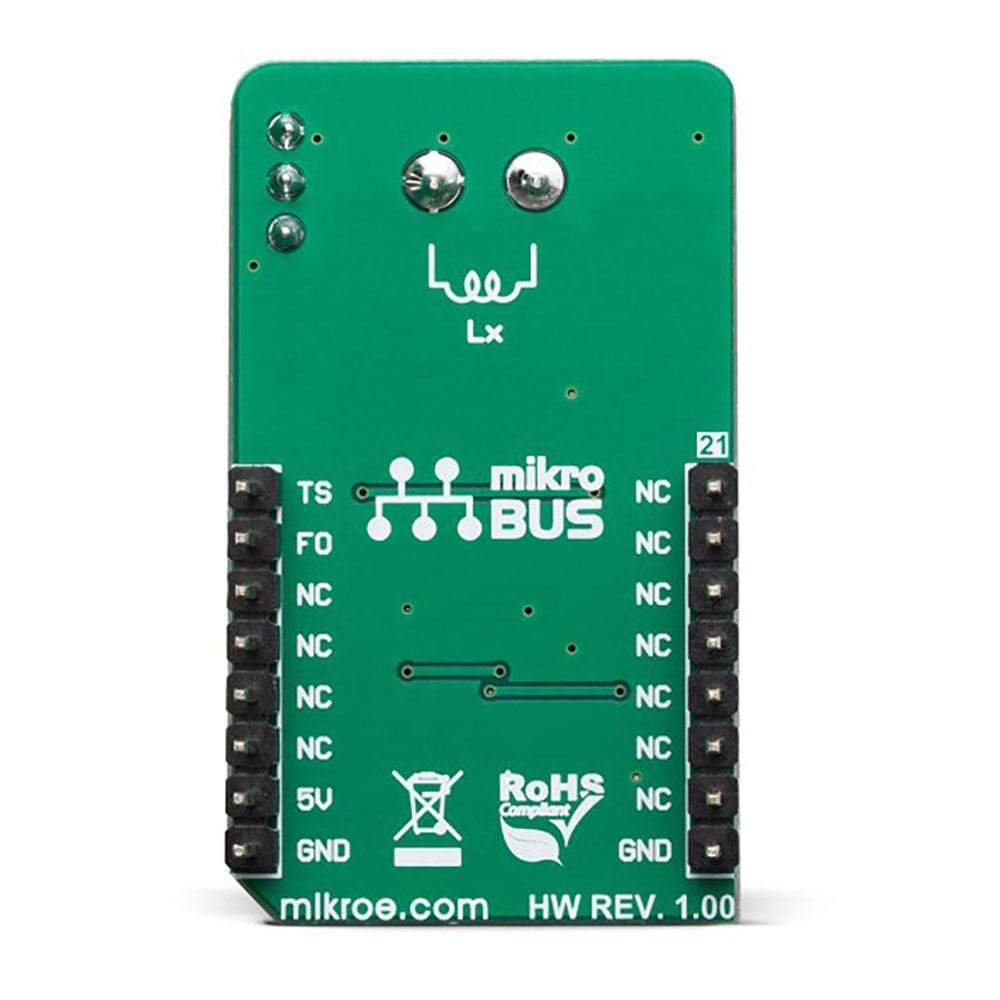
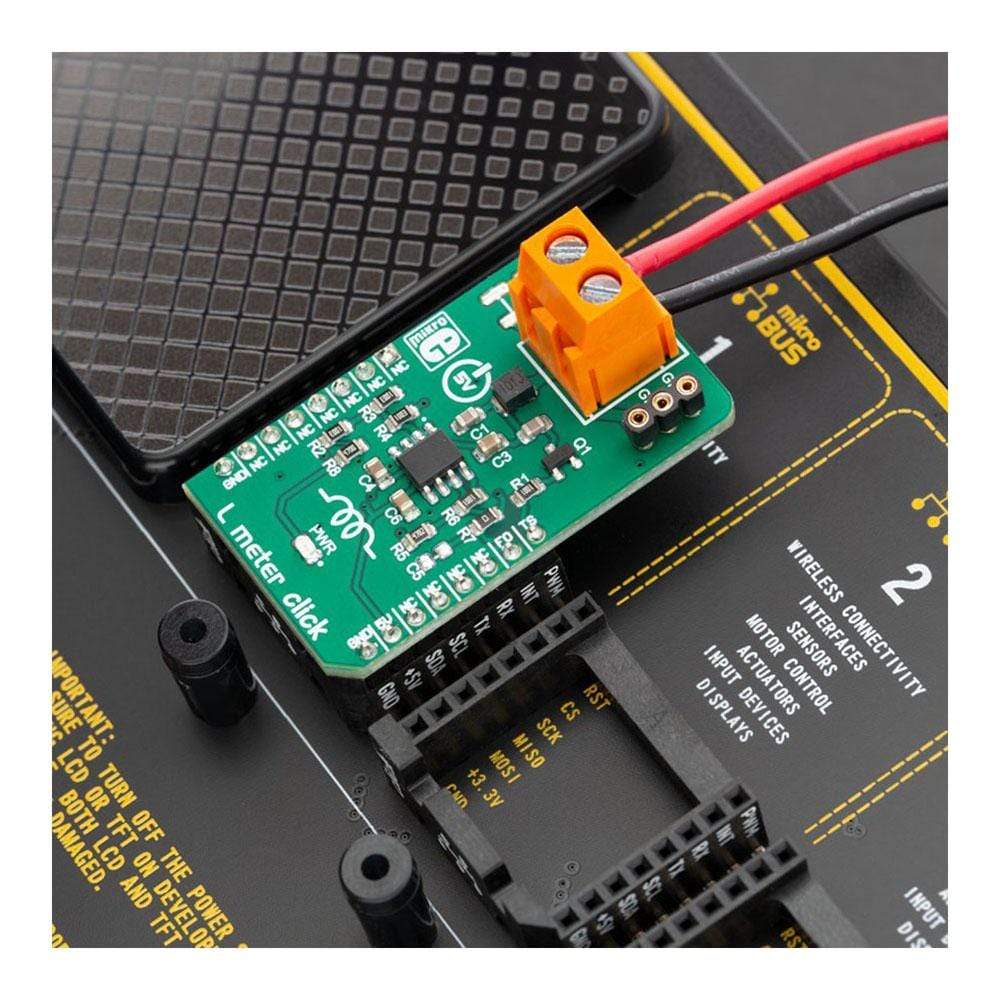
Overview
The L Meter Click Board™ is a compact and accurate Click Board™, capable of measuring and monitoring the inductance of the external component. The board can be used to measure a wide range of inductance. The design is based on a single high-speed voltage comparator LM311 by which the frequency of the oscillating LC circuit is measured and, based on the known value of capacitance, measures the unknown inductance value.
The L Meter Click Board™ can be used to measure inductance as well as to check the accuracy and precision of the coil.
Downloads
Le L Meter Click Board™ est un Click Board™ compact et précis, capable de mesurer et de surveiller l'inductance du composant externe. La carte peut être utilisée pour mesurer une large gamme d'inductance. La conception est basée sur un seul comparateur de tension haute vitesse LM311 par lequel la fréquence du circuit LC oscillant est mesurée et, en fonction de la valeur connue de la capacité, mesure la valeur d'inductance inconnue.
Le L Meter Click Board™ peut être utilisé pour mesurer l'inductance ainsi que pour vérifier l'exactitude et la précision de la bobine.
| General Information | |
|---|---|
Part Number (SKU) |
MIKROE-3505
|
Manufacturer |
|
| Physical and Mechanical | |
Weight |
0.02 kg
|
| Other | |
Country of Origin |
|
HS Code Customs Tariff code
|
|
EAN |
8606018715077
|
Warranty |
|
Frequently Asked Questions
Have a Question?
Be the first to ask a question about this.

